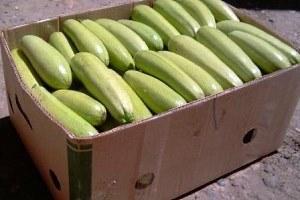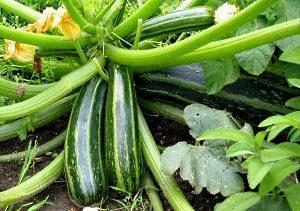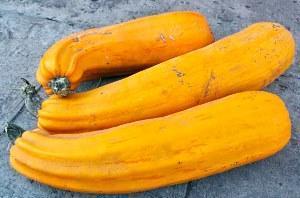How to store zucchini correctly - accessible and useful tips
 Zucchini is a versatile and tasty vegetable, without which the dining table looks too boring in the summer. If you know the secrets of how to save zucchini until late spring, then you can prepare them for future use as much as you like. Fortunately, the number of dishes that can be prepared from these fruits is so many that they can be served at least every day. Fried with garlic, stewed, baked, sweet zucchini (the jam from a vegetable is excellent) - you can't count everything.
Zucchini is a versatile and tasty vegetable, without which the dining table looks too boring in the summer. If you know the secrets of how to save zucchini until late spring, then you can prepare them for future use as much as you like. Fortunately, the number of dishes that can be prepared from these fruits is so many that they can be served at least every day. Fried with garlic, stewed, baked, sweet zucchini (the jam from a vegetable is excellent) - you can't count everything.
Which varieties are suitable for long-term storage?

But only mature zucchini of certain varieties... They are protected by a dense, rough skin, and the core is full of seeds that can be used for the next planting.
The following varieties are suitable for long-term storage:
- Pear-shaped. Zucchini got this name because of its peculiar shape, reminiscent of a pear. Possesses excellent taste. Dark orange color of the pulp. Average weight - 1.3-1.5 kg.
- Yellow-fruited. A common variety with excellent seed germination rates. Vegetables will look like they have just been picked until next summer if you know how to store zucchini with yellow peel in winter.
- Negro child. An interesting and not very common vegetable, which got its name from its black and green skin. The flesh has an unusual green color. The beneficial properties of the tasty pulp can be preserved for up to 2 months.
- Aeronaut. A favorite variety of gardeners, because the fruits ripen early, and within 1.5 months after the first shoots appear, zucchini with dark green peel can be removed from the beds. They retain their qualities up to 4 months of storage, while they have a decent weight - up to 1.5 kg on average.
The shelf life of zucchini depends on their preparation for wintering.
If you pick zucchini in damp weather and immediately put it in boxes for storage, after a few weeks the gardener will be severely disappointed because the vegetables will begin to rot.
Tips for storing zucchini until spring include a helpful tip: The fruit should be thoroughly dried before stacking. But in no case should they be washed!
 A stalk cut too short will not be able to protect the vegetable from the penetration of pathogenic bacteria that cause rotting. And the leg, the length of which is at least 5 cm, will help to keep the zucchini completely intact. Suitable for storage are vegetables 15-45 cm long, having a dense thick peel and a strong stalk. You should not stack zucchini that are overripe, because their taste is much inferior to earlier fruits, and they are stored much worse.
A stalk cut too short will not be able to protect the vegetable from the penetration of pathogenic bacteria that cause rotting. And the leg, the length of which is at least 5 cm, will help to keep the zucchini completely intact. Suitable for storage are vegetables 15-45 cm long, having a dense thick peel and a strong stalk. You should not stack zucchini that are overripe, because their taste is much inferior to earlier fruits, and they are stored much worse.
How to keep zucchini at home
 If there is no basement or cellar, a reasonable question arises: how to store zucchini in an apartment or in your house?
If there is no basement or cellar, a reasonable question arises: how to store zucchini in an apartment or in your house?
Vegetables are perfectly preserved in the living space if a dark, cool place is chosen for their storage. In order not to stumble over zucchini, you should find a free area for them, where the laid out fruits will not be conspicuous and spoil the aesthetic appearance of the room.It is important that they are dry and free from dirt, but should not be washed with water. The best option is a dry cloth, which can easily remove dried dirt from the peel.
This could be a pantry or under the bed. The fruits can be arranged in a special box. But if there is none, then it is better to wrap the zucchini in paper and store in such a packed form in a secluded corner. Vegetables must not be left in close proximity to heating devices or in damp rooms where there is no heating.
If you use a refrigerator for these purposes, the shelf life of zucchini is significantly reduced - up to 1 month.
But such conditions are most suitable for early, immature, thin-skinned fruits that cannot be stored for a long time. A large number of young zucchini will not fit in the refrigerator, and there is no such need, because in the summer new fruits ripen very soon.
You need to harvest very carefully in autumn. For long-term storage, ripe fruits are suitable, but not overripe or underripe. In overripe pulp, after a short time, it acquires a bitter taste, and the early fruits deteriorate due to the lack of protective "armor" that protects the squash from temperature extremes and pathogenic microorganisms. Juicy, medium-sized fruits with a dense skin are perfectly preserved until spring.